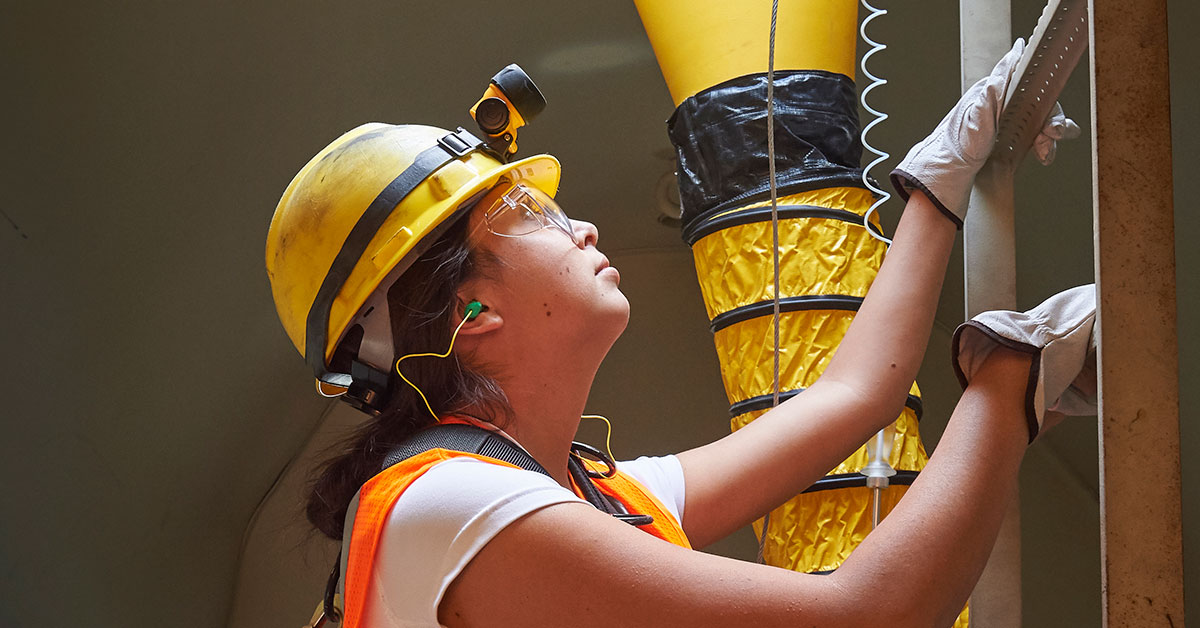Consider comfort and female sizes when selecting PPE
Date Posted: 08/31/2020

The requirements for selecting personal protective equipment (PPE) in 1910.132 require the employer to “select PPE that properly fits each affected employee.” This requirement was added, at least in part, to ensure that women have access to properly fitting PPE.
The provision on fit appeared when the regulation was revised in 1994. At the time, items like safety shoes were not common in women’s sizes. A commenter to the proposed rule noted that women often had to wear PPE that was sized to fit men, or accept the risks of not wearing PPE at all.
OSHA agreed that if PPE was uncomfortable or poorly fitted, employees were less likely to wear it. Even if workers struggled through the day with ill-fitting PPE, the items may not provide adequate protection. Therefore, OSHA noted the necessity that female (as well as male) workers be provided with PPE that fits properly.
Fit may not equal comfort
While fit is important, comfort of PPE should also be considered. Anyone who has bought new shoes knows finding a shoe that fits is not the same as finding a shoe that’s comfortable. Items like gloves or safety glasses raise the same concerns.
An OSHA guidance on personal protective equipment (OSHA 3151-12R) recommends the following:
“Employers should take the fit and comfort of PPE into consideration when selecting appropriate items for their workplace. PPE that fits well and is comfortable to wear will encourage employee use of PPE. Most protective devices are available in multiple sizes and care should be taken to select the proper size for each employee. If several different types of PPE are worn together, make sure they are compatible. If PPE does not fit properly, it can make the difference between being safely covered or dangerously exposed. It may not provide the level of protection desired and may discourage employee use.”
Enforcing use
To be effective, PPE must also be used and cared for properly, which often requires training. In addition, employers must enforce PPE use. Often, enforcement falls to supervisors. However, reminders to wear PPE could go beyond a simple reprimand, and supervisors should be aware of potential issues involving comfort and fit.
If an employee is not wearing PPE when required, supervisors might ask if the employee is experiencing problems with the PPE. It may be that a different size or style will offer more comfort, or that the item is worn or damaged. Rather than enforcing PPE use through disciplinary reminders, supervisors should work to encourage PPE use by eliminating problems such as improper fit.
How Safety Management Suite Can Help
When selecting PPE (or any number of other products), getting feedback on how well the product works can be challenging. To help you identify potential solutions, try checking with other safety professionals. The J. J. Keller® SAFETY MANAGEMENT SUITE hosts one of the industry’s largest online discussion boards, allowing you to share ideas and insights with other safety professionals across the country. Easily post a question in the discussion boards to get feedback from other safety professionals who will share their experiences.
E-mail Newsletter
Sign up to receive the weekly EHS Insider email newsletter for safety articles, news headlines, regulatory alerts, industry events, webcasts, and more.